In 1982 Floyd Rose and Jonathan K. were in a group called The Core. It was one of the few bands in Seattle playing original music nightly in clubs While everyone else was playing "cover" tunes. They were a popular act, but there were clear divisions of interest within the band. Floyd and Jonathan decided to break away from The Core and formed what at first was to be just a recording project. They called it Q5.






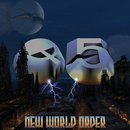
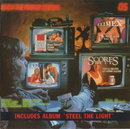
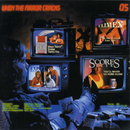
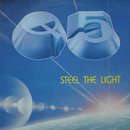
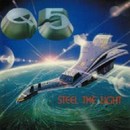



The named implied nothing. They began to write songs Floyd and Jonathan had decided that just to put another band together in order to play in bars was not the way to do things any more. They wanted to record a demo and see if the music they believed in was good enough to be heard by more than just local fans. Now they needed some other players. Jonathan had done a recording project a couple of years earlier with a drummer named Gary Thompson. He thought Gary was one of the best drummers he had ever heard. Evan Sheeley was on the list simply because even then his playing ability was monstrous. Floyd and Jonathan couldn't decide if they wanted another guitar or keyboard or both so they left it at that. Both Gary and Evan were in local rock legend TKO. TKO was signed to a major label. One of only a very few bands from Seattle to claim that distinction at that time. They were an impressive band. The musicians were all top notch and they were fronted by "Bad" Brad Sinsel. Sinsel had an in your face style with a voice that evoked memories of Joe Cocker or Roger Daltry on steroids. TKO was playing a showcase at a local venue Jonathan and Floyd attended so they could approach Gary and Evan about the Q5 project. While watching the band they were drawn to the guitarist Rick Pierce. He was flamboyant and yet played solid and scorching leads. After the show Floyd and Jonathan talked with Gary and Evan about Q5, Rick Pierce was tentatively approached but declined to be involved in the first phase of the project. Evan and Gary agreed to record. Q5 recorded a three song demo tape at The Music Source, a well known studio in Seattle. It was owned by Jim Wolfe, music maker in the 60's and 70's. The studio was comfortable and boasted cutting edge equipment and Jim's knowledge of recording was to be helpful to the band for several years. During the course of recording the the four members of Q5 became close friends. Evan and Gary decided to leave TKO. Rick Pierce was then asked if he wanted to come onboard with Q5. He agreed to join and Q5 was now a two guitar band. The stage was set Ken Kinnear was manager of Heart, one of the biggest rock bands in the world. He also had managed a few other bands, including for a time TKO. Evan and Floyd took the Q5 demo to Kinnear. Within a week Q5 was managed by Kinnear and Albatross Productions The band began to rehearse in an old club. During the summer of 1983 Q5 wrote songs and played them live to audiences two nights a week. Word began to spread about a new band that played hard and fast. After a couple of weeks the club was full whenever Q5 played. It was time to record again. This time for a full blown album. The band was madly writing, searching for that one final song that would cap the new album. Q5 flew to Los Angeles and began recording their first album. The band spent three weeks at Cherokee Studios re-recording some of the songs from their demo as well as some new songs. They then returned to The Music Source in Seattle and recorded even more songs, including a new one, it was called " Steel The Light". Steel the Light was a great song. It was the one song that everyone in the band had a hand in writing and it defined the direction that Q5 wanted to go. Metal yet melodic, huge guitar sound and a lyrical story It was a great song to anchor Q5's first album. Soon local rock radio stations KZOK and KISW got fully behind the band and began playing music from the album in rotation. Q5 released the album first on Albatross Records and began to shop it around. It was picked up by Victor Records in Japan, Mercury/Polygram Records in Canada, and Music For Nations the largest independent distributor for Europe Music For Nations was solidly behind Q5. They changed the artwork on the Album and promoted it heavily. With this debut Q5 set records for sales of an independent album and was on the music charts for quite some time. The Music critics and writers for legendary Kerrang! magazine voted Steel the Light one of the top recordings of 1983 Q5 was rocking. A series of showcases were planned. They opened for Lita Ford and others, including a memorable show with Y&T and Twisted Sister Q5 blew the house down with a blistering set. The crowd went wild, but no encore was allowed an opening act Next up was Y&T it did not go well. Nuff said Q5 was obviously a band to see LIVE! Their love of playing was evident to anyone lucky enough to see them. They were a no holds barred Rock Band that gave the audience what they wanted to hear, without posture and attitude. A tour of Europe was being discussed including a slot at at Donnington. Suddenly, drummer Gary Thompson had an accident whilst skiing and blew his knee out. The tour was set aside and the band discussed what to do next While Gary was healing up, the band made a fateful decision. Rather than hit the road and promote Steel The Light with a temporary drummer, they chose to begin writing. Floyd Rose was having personal success as inventor of the locking nut device for guitars and wanted to build a recording studio in his house for the band to use. By the time the studio was done, Gary was ready to play again. Several months had passed. Again the band decided to record rather than play live figuring to capitalize on two albums rather than one. But differences in opinion about what to record began to surface The band was receiving some pressure to be a little more "mainstream". The airwaves were being dominated by pretty boy bands that were heavily produced. Q5 had its roots in the early metal and hard rock scene and their influences were mostly British. Yet another fateful decision was made, to try and crossover to the mainstream. When The Mirror Cracks was released in 1986, again by Music For Nations to mixed reviews.The songs were good and showed that Q5 could write and play whatever they wanted but many of the early fans of Q5 were dismayed at the radical change in the sound. The massive guitar attack that made Steel the Light a classic had been smoothed out and produced downEven so, there were many good reviews and Q5 was noticed by Cliff Bernstein and Peter Mensch whose stable of bands included Metallica, Dokken, Def Leppard, and Tesla. Their organization was strangely enough called Q-Prime. Bernstein and Mensch met with Q5 and signed them to their record label Squawk, a division of Polygram records. Q5 was now in the big show Q5 spent the next year writing and recording their third album. They also made a video of their song "Borderline" from When the Mirror Cracks. They recorded nine songs and sent them to Q-Prime. The response was exactly the opposite that the band was expecting. They wanted the band to be more commercial. The band had a meeting to discuss what to do next. They had spent the last three years writing and recording two albums.One of them it seemed would never be released. Jonathan K. decided he'd had enough. He quit the band he'd co-founded nearly seven years before. Q5 carried on briefly. A new singer was hired to help write some new songs. Rick Pierce left Q5 about a year after Jonathan K The band officially dissolved. Postscript In 1996 the band Great White did a cover version of Q5's "Aint' No Way To Treat A Lady" for their album" Let it Rock". They also released the song on two of their other albums. "Recover" in 2000 and"Final Cuts" in 2002. Evidently they liked the song enough to put it on three of their albums. Jonathan K. and Floyd Rose were not listed as the writers of the song. No explanation has ever been given for this. In 2002 the German heavy metal band Powergod released a kick ass version of "Steel The Light" on their album "Bleed For The Gods". Over the years several other major bands have done covers of Q5 songs.In 2009 Finnish metal powerhouse Burning Point, did a cover of "Let Go" from Q5's second album "When the Mirror Cracks" with JonathanK. doing a guest stint on vocals. NIGHTSHADE HISTORY:.Out of the ashes of Q5 a phoenix would rise in the form of a new band called. Nightshade. .Rick Pierce and Jonathan K. formed the band so they could return to the metal roots that made the Q5 sound so memorable. They formed Nightshade, snagging a young drummer named Jeff McCormack and bass player Anthony Magnelli. Rehearsals began with the anticipation of recording in the near future. The band began to play live. The first Nightshade show was with Love/Hate. Even the formidable Jizzy Pearl was taken aback by the pure metal onslaught that was Nightshade. Other shows followed. The band began to jell like seasoned veterans. Nightshade kept the metal faith while around them other bands began to play a different sound As time went on it became apparent that the music scene in Seattle was changing. The bands were different, the clothes were different, and the music was very different.The formidable Rock radio stations in Seattle continued to play music by well known artists but eventually even they realized that the music that had started there was moving across the country. Metal maniac Rockfish at KISW radio continued to play Nightshade on his Metalshop show for years and was a big help in keeping the Nightshade and Q5 name alive. Nightshade signed a deal with their European distributors Music For Nations and began recording their first cd. Released in early 1992, Dead of Night debuted at 1 on the European indie metal charts and stayed there for some time. Back in Seattle the metal scene was dying. Leather was out, flannel was in. The high flying cocaine snorting days of hot bands, hot chicks and even hot